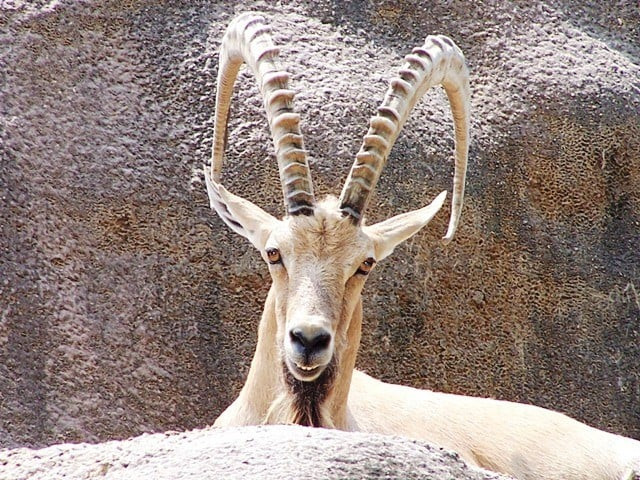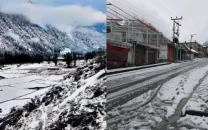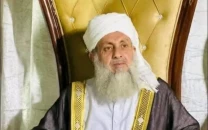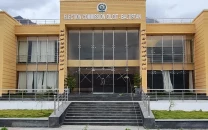Load, lock, shoot: Hunting season begins with first ibex kill
Prey claimed by an Australian in Gojal

Prey claimed by an Australian in Gojal . PHOTO: FILE
Gilgit-Baltistan (G-B) is home to a number of endangered wild animals which makes hunters flock to the area for trophy hunting, a male-dominated sport. On Monday, the blood sport kicked off in G-B’s Gojal Valley, resulting in the hunt of the first ibex this season.
Talking to The Express Tribune on Tuesday, an official of the wildlife department said, “Australian national Espin Filskov, who travelled all the way to Gojal, was the man behind the shot.” He added, “It was a good hunt by a foreigner; the size of the ibex horns measured 49 inches which is not common.” Filskov spent two days in the valley with locals and wildlife officials searching for an animal suitable for trophy hunting.
PML-N lawmaker’s house besieged to rescue baby ibex
Range Forest Officer Shabbir Baig, who supervised the hunting, said, “The hunter shot the animal from the roadside. The ibex was about 300 kilometres away in the Khunjerab Villagers Organization’s area.
Modus operandi
The provincial government announced a quota for trophy hunting in the region for 2015, inviting national and international hunters to the region known as a “living museum” for its varied wildlife and natural beauty. In November 2015, the provincial government sold permits to hunt four markhors, 60 ibexes and eight blue sheep in the region. The licence fee for markhors, Himalayan blue sheep and ibexes was set at $67,500, $8,800 and $3,000 respectively.

Trophy hunting quotas are decided on the basis of annual surveys conducted by wildlife experts. The cost of an animal is fixed according to the population of the species.
Programme introduction
Trophy hunting programme was first introduced in early 1990s in Nagar. The season begins in November and ends in April every year.
Without a licence: Three arrested in Nagar for illegally shooting ibex
One of the significant features of the trophy hunting programme is that 80% of the hunting fee goes towards the local community while the government spends the remaining 20% on projects for the welfare of forests and biodiversity. The communities use their share on projects aimed at conserving natural resources.
Published in The Express Tribune, December 9th, 2015.


















COMMENTS
Comments are moderated and generally will be posted if they are on-topic and not abusive.
For more information, please see our Comments FAQ